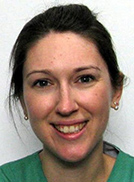Real-life characteristics and outcome of biopsy-proven post-transplant lymphoproliferative disorders after solid organ transplantation
Post-transplant lymphoproliferative disorder (PTLD) is a rare but life-threatening complication after a solid organ (SOT) or a hematopoietic stem cell transplantation (HSCT). Given its low incidence, prospective data on patient-related characteristics, prognostic scores etc. are scarce. To address this data gap, the University Hospitals Leuven performed a retrospective, monocentric trial, including 163 patient cases with PTLD after SOT. For each subject patient-, transplant- and disease-related data and outcome parameters were recorded and retrospectively analyzed.
Background
Post-transplant lymphoproliferative disorder (PTLD) represents a a rare but life-threatening complication that can occur after a SOT or a HSCT. Since PTLD is such a rare disease, prospective data are difficult to generate and monocentric retrospective data remain essential for a more in-depth characterisation of this disease. In this light, a retrospective, monocentric trial performed in the University Hospitals Leuven, wanted to collect data regarding the incidence and patient-, transplant- and disease-related characteristics of PTLD. In addition to this, the analysis also looked into prognostic scores and outcome parameters in patients with PTLD after SOT. To this end, data were analysed of all adult and paediatric SOT recipients with biopsy-proven PTLD admitted at the University Hospitals Leuven between 1989 to 2019.
Results
In total, 163 cases of biopsy-proven PTLD after SOT were identified, of which 16 paediatric (< 18 years) and 147 adult cases. The overall incidence of PTLD for all types of SOT was 2.6%. The median age at diagnosis of PTLD in this cohort was 54.7 years and a male predominance of 69.3% was seen. The median time from transplant to PTLD diagnosis was 4 years, with most PTLD’s (79.1%) occurring late (more than one year after transplantation). The type of transplanted organ was kidney (41.1%), heart (18.4%), lung (16.6%), liver (16.6%) or multi-organ (7.4%). Twelve patients received a re-transplantation after the development of PTLD (6 kidney, 2 lung, 1 liver, 1 HSC, 2 multi-organ). Most cases were monomorphic (83.4%), with diffuse large B-cell lymphoma as most frequent subtype (62.6%). The Epstein Barr Virus in situ hybridisation (EBV ISH) at diagnosis was positive in most cases (59%) and, as expected, the number of positive EBV ISH was higher in early PTLD cases (87.5%) compared to late PTLD (52.5%). At diagnosis, most patients presented with Ann Arbor stage IV disease (58.7%) and extranodal involvement (80.4%). About half (50.3%) of the patients received classical triple immunosuppressant therapy (combination of calcineurin inhibitor, antimetabolite and low dose steroids) at the time of diagnosis.
Initial therapy included reduction of immune suppression (92.6%), rituximab (58.3%), surgery (14.7%), radiotherapy (8%), chemotherapy (24.5%), antiviral treatment (3.1%) or high dose corticosteroids (4.3%). The limited use of rituximab in this cohort can be explained by the fact that many of the PTLDs included in this analysis were treated in the pre-rituximab era. Following initial therapy, the rates of complete response (CR), partial response (PR), stable disease (SD) or progressive disease (PD) were 54%, 12.9%, 5.5% and 19%, respectively. Eleven patients (6.7%) died during first-line treatment and three patients (1.8%) received supportive care only. After one year, the overall survival rate for the whole cohort was 70% (95% CI: 64-75%) dropping to 52% (95% CI: 46-58%) and 44% (95% CI: 38-49) at five and ten years, respectively. At last follow-up, 75 patients were still alive and 88 patients had died. Out of these 88 patients, the cause of death was PTLD-related in 39 of them (44%). The relapse-free survival of patients in complete remission after one, three and five years was 86% (95% CI: 78-92%), 68% (95% CI: 59-76%) and 59% (95% CI: 50-66%), respectively.
Conclusions
This retrospective analysis of 163 cases of post-transplant lymphoproliferative disorder after solid organ transplantation represents one of the largest single-institution cohorts published in literature. Given the lack of prospective data, this type of data is essential to further characterise PTLD.

